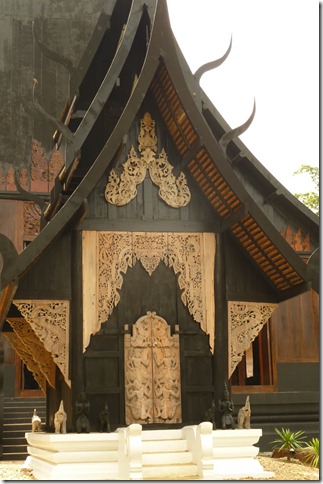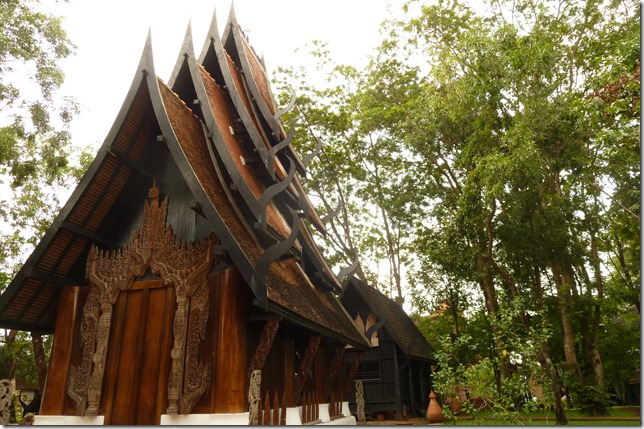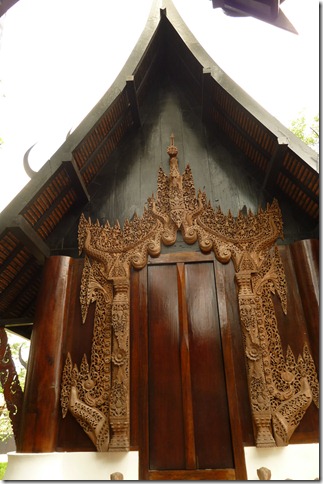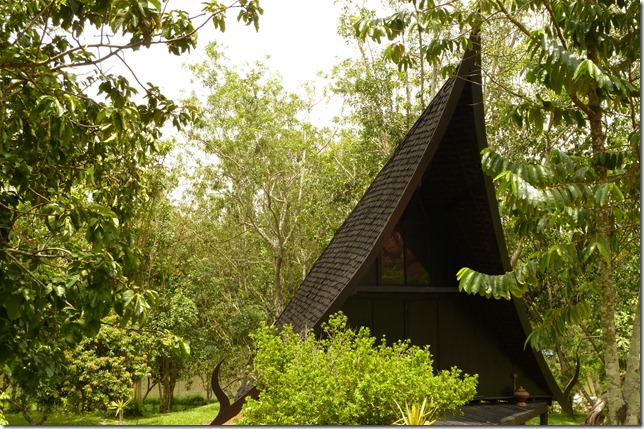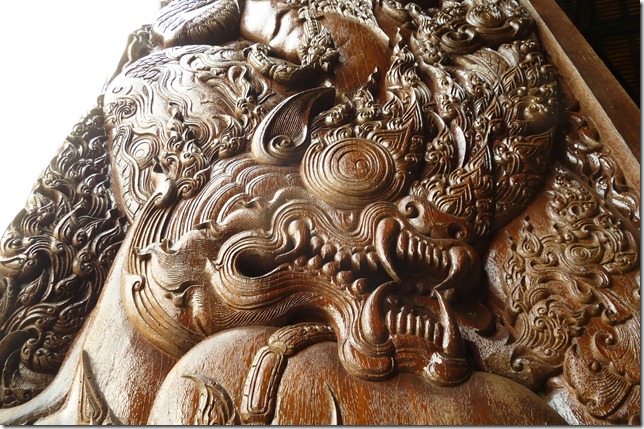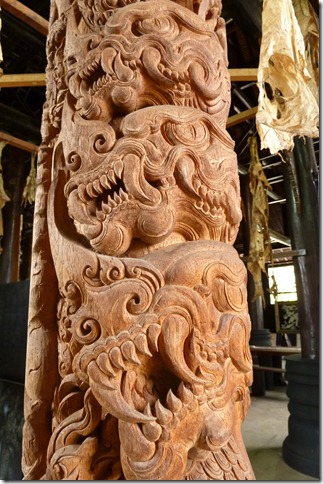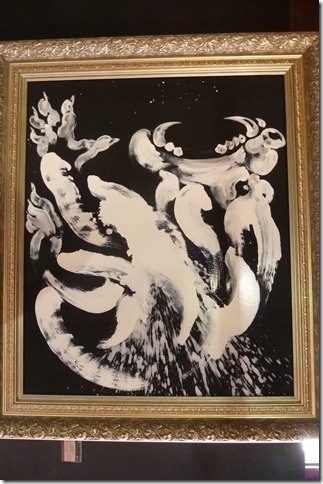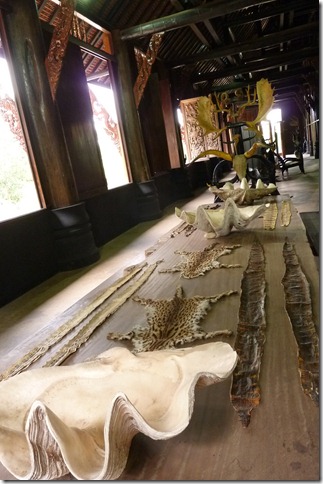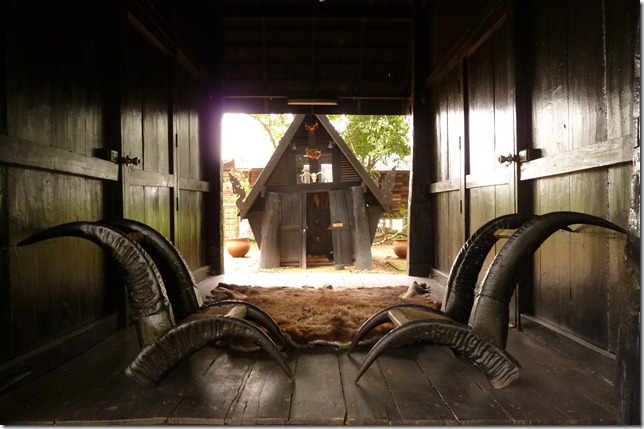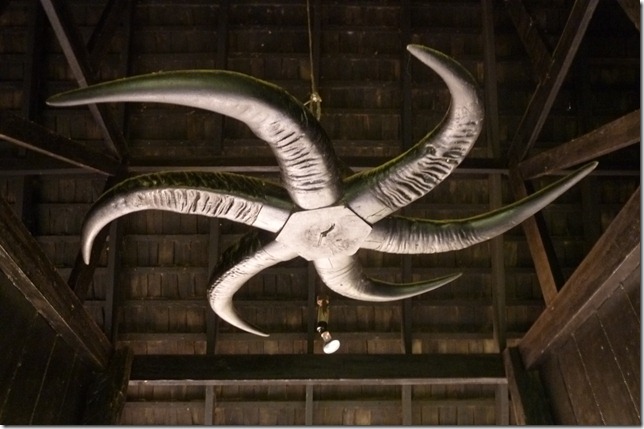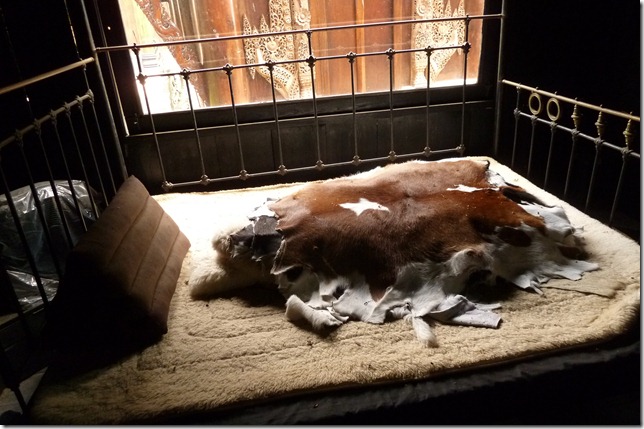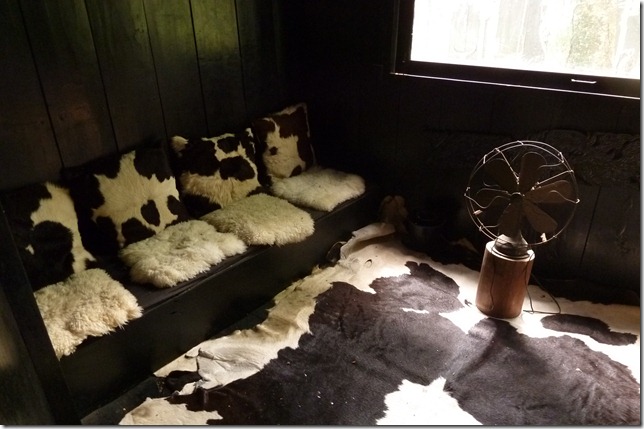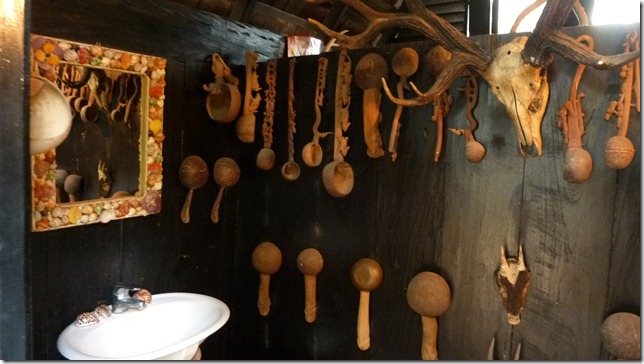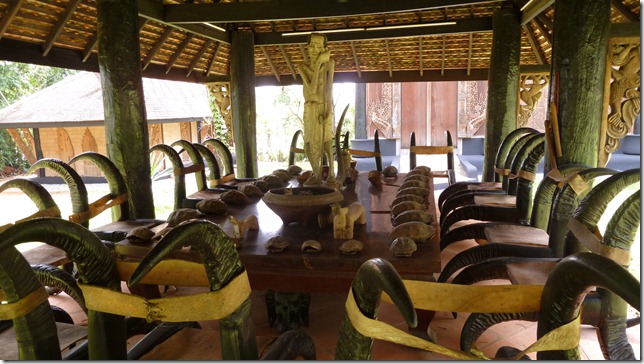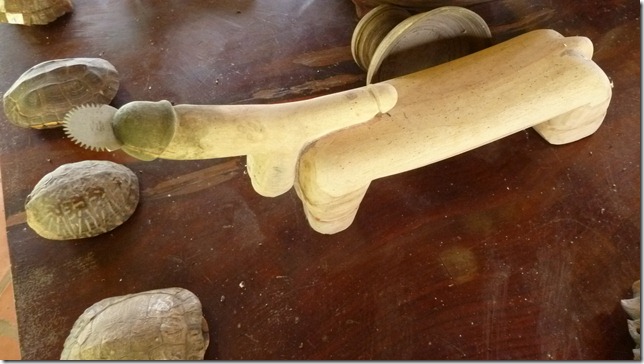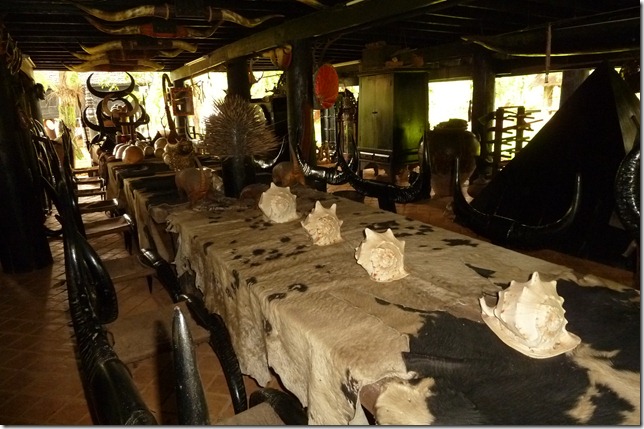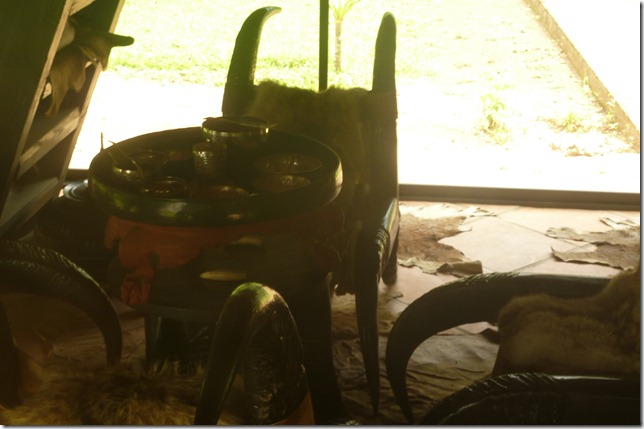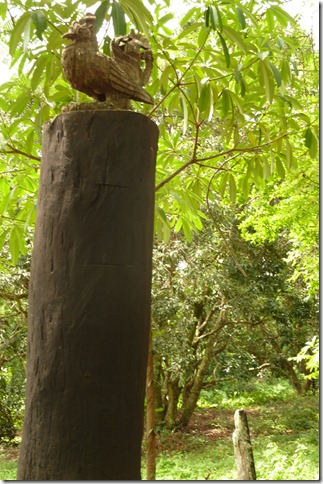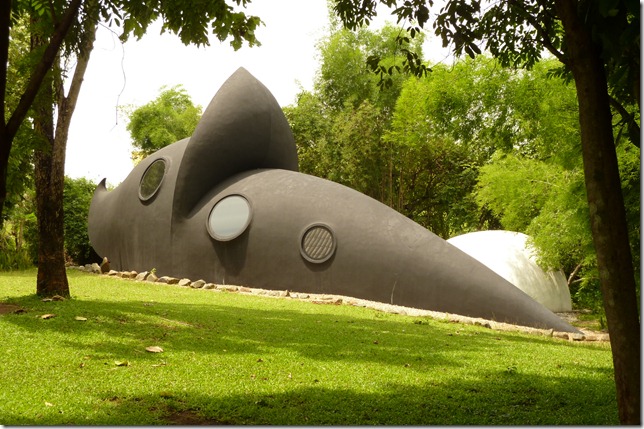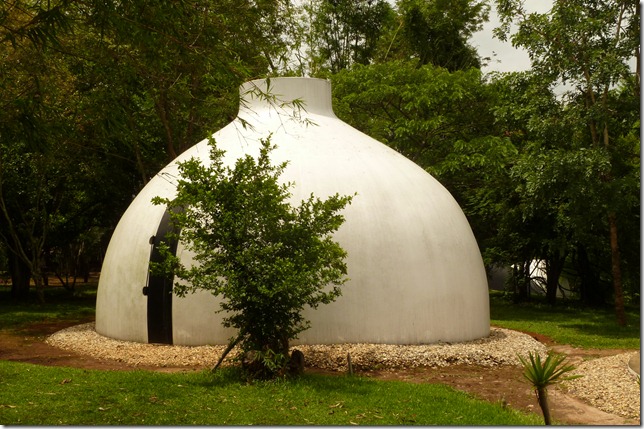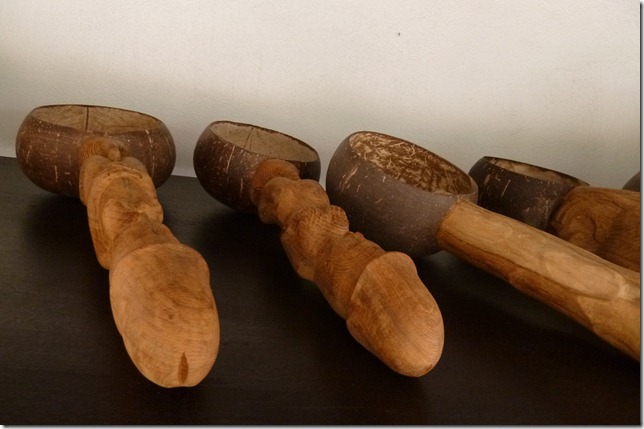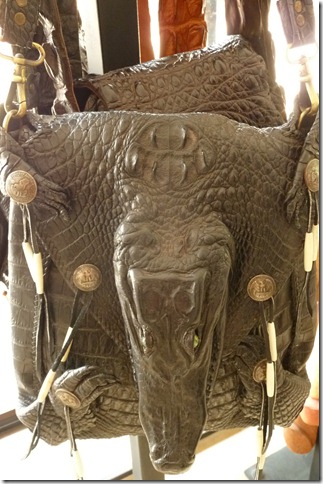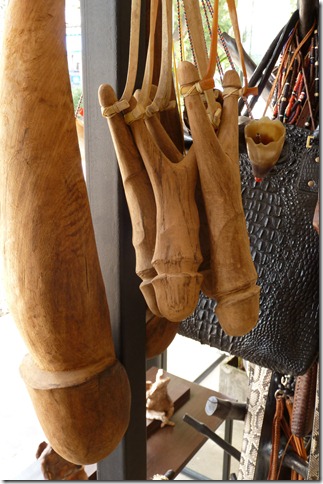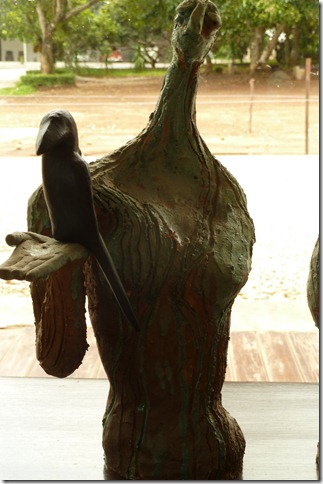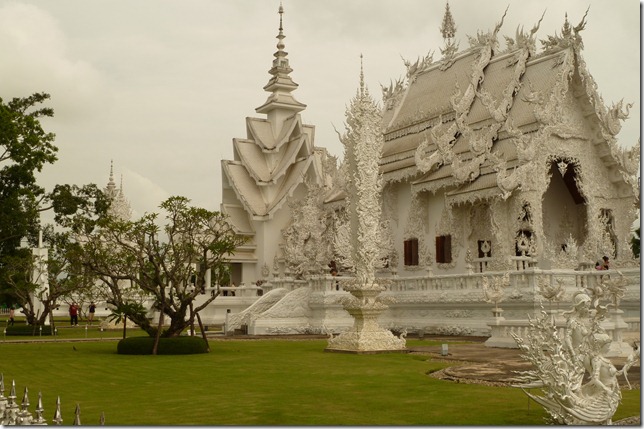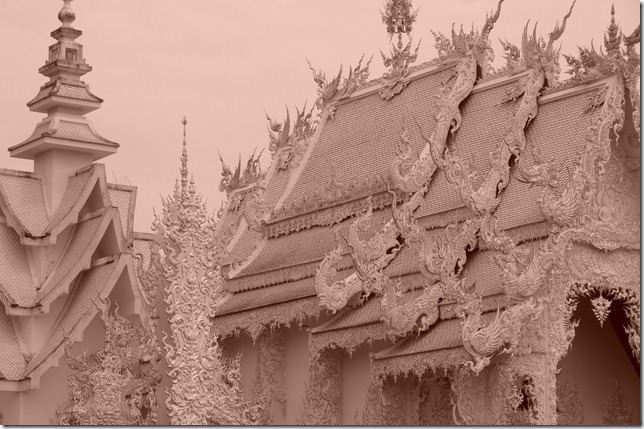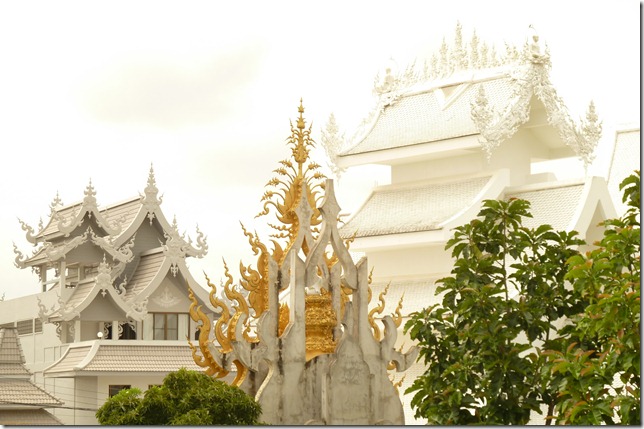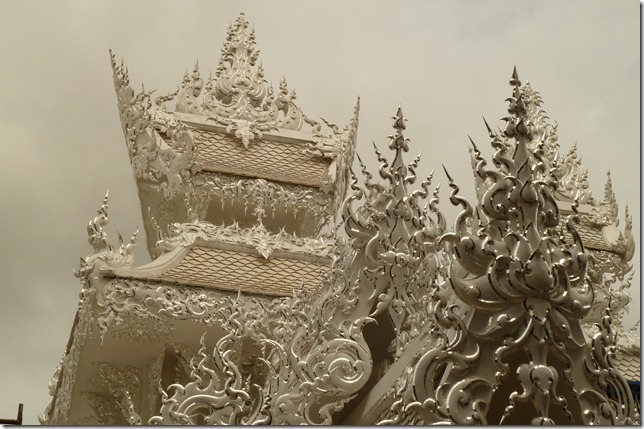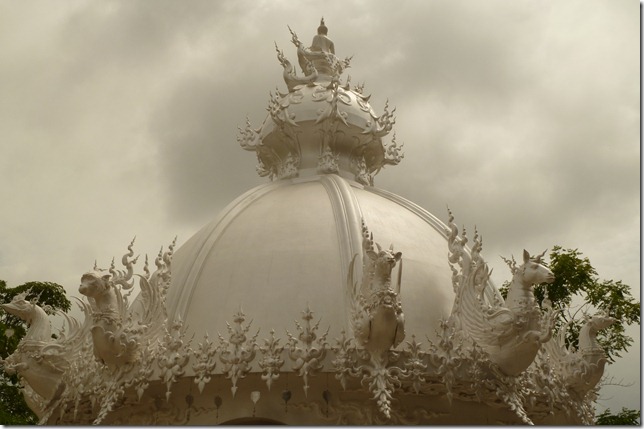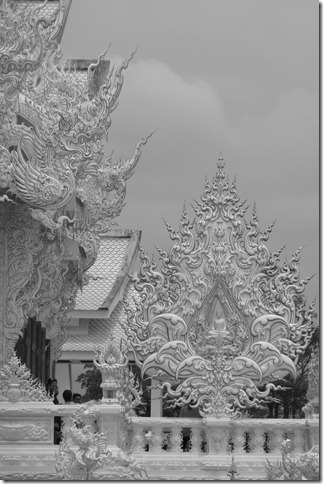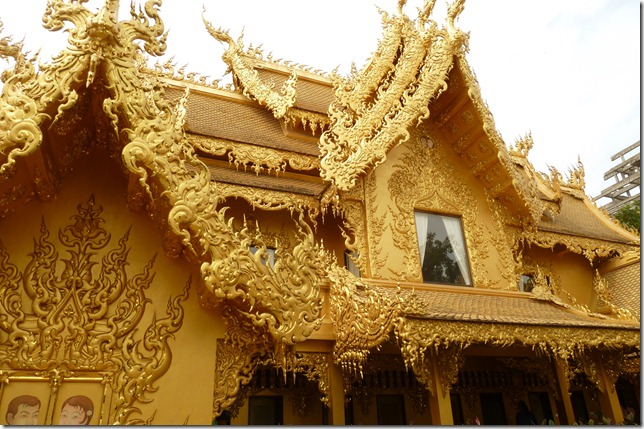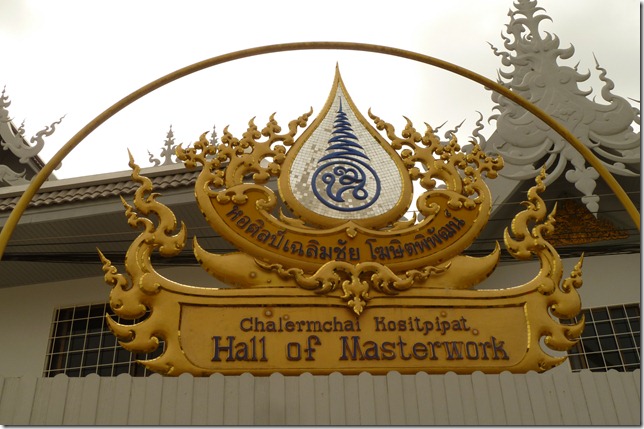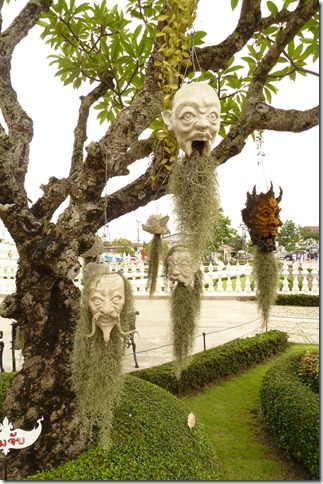Part I: Cobra-Snake For A Necktie
[dc]W[/dc]oke the dimpled ass up early on Saturday, my first morning in Chiang Rai, to get a bicycle and wheel it up to the tantalisingly-monikered “Black Temple”.
If one would recall my having, whilst in Nong Khiaw, met a Vancouverite during the hike up to one of the Pathet Lao caves there. She told me about the so-called “Black Temple” and “White Temple”, located in Chiang Rai. Though she’d not herself been, her vague-but-enthusiastic second-hand description had had me wanting, since that day, to get here and see what they were all about.
The Baandam Museum, as it’s officially known, is in point of fact the residence of Thailand National Artist Thawan Duchanee.
Arriving to his pad was a bit trickier than the Wikitravel entry had made it out to be. My fault really, for having taken a tad too literally the direction to — after having traveled a certain number of metres from the main road — turn onto a “small” soi; and thus passing by the road on which the museum is located, ‘cause it was a little bit bigger than I thought a “small” soi should be.
So this led to me getting lost, and asking directions from locals. In typical Thai fashion, they were all very friendly and willing help out. Also in typical Thai fashion, they were all pointing me in different directions. But finally got it all straightened out; and have since clarified the Wikitravel directions (in case you, like me, can tend toward the pedantic).
The museum is comprised of many structures of varying size, with the one theme in common: the colour black. Hence, the name. Oh, also in common is the stunning beauty of the structures.
Clearly, we are in the presence of a true master. Entering into the workshop (housed in the largest of the grounds’ buildings), however, one begins to realise that while we may be privileged to have entered into his sway, we’re not going to be able to have done so without paying for it.
The carvings on the massive doors and the dozen or so totem poles situated just inside the entrance, as well as many of the paintings informally arrayed here and about, begin to lift Pandora’s lid…
…while the display tables to the rear of the hall prise it open still further…
…and a couple moments’ peeking inside the first few buildings along the walking path explode it into a trillion pieces.
With the exception of a few buildings housing Buddhist shrines, the theme repeats throughout one’s hour-or-so-long journey ‘round the park.
There are a few touches of whimsy along the way…
…and even a few horses lazing it about over in one corner. But mostly, it’s an all-out bludgeoning.
Though one will search in vain the artist’s website for a statement to the effect, I can’t but believe that the intent is to present some kind of commentary regarding our culture’s mad obsession with meat, and the utterly casual cruelty with which we set about obtaining it. Anyway, that’s my interpretation; maybe you’ve a different?
Certainly the giggling Japanese tourists gathering after their tour for photo-ops under the entrance sign seemed to have experienced something more akin to a stroll through Disneyland than having witnessed a horrifically disturbed visionary reflection of the times in which we live.
The gift shop, incidentally, is almost as out-of-the-gourd as the museum proper.
The attached gallery, at least, includes some touching works depicting human/animal symbiosis (or something like).
Not nearly so much fun as Nong Khai’s Sala Kaew Ku, but surely more important; the Black Temple, whatever its meaning, is a major achievement of the imagination. Both a harrowing and an exhilarating experience, it must be seen to be believed. Like Sala Kaew Ku, it ought to be a shortlist-destination of any Southeast-Asian itinerary.
Part II: Angel Or Devil, I Don’t Care
[dc]U[/dc]pon arriving to-day, Monday, via city bus, to its location, I discovered that the “White Temple”, Wat Rong Khun, on the other hand, is already a fairly major tourist destination. It’s the life work, in fact, of a student of Duchanee’s; and is not slated for completion until 2070.
This one plays much more lightly on the psyche. Not to say that it’s not at all polemical; but the somewhat demonic imagery threwn in for good measure is pretty easily digestible, while war-is-bad undertones shouldn’t be terribly controversial – even if the massive mural the back of the temple hall does imply that the “War On Terror” is all about oil and the gallery painting depicting Bush and Osama riding gaily together about the heavens atop a miniature rocket-ship does appear to be the artist’s calling of bullshit upon the “Clash Of Civilisations”.
Anyhow, the tourists turn up in droves – as well they should, for the “White Temple” (officially named Wat Rong Khun) is as staggering a smorgasbord for the eyes as is its diametrically-hued cousin. Presumably inspired by the Dr. Zhivago Ice Palace, the nickname is, well, not un-deserved:
But applying the camera’s sepiatone filter gives an interesting twist as well.
Either way you shade it, it’s a pretty miraculous scene. There’re other structures on the grounds, too (and more on the way – hence the proposed 2070 completion-date).
The one building breaking the colour rule is, you guessed it…
…the shitter.
The temple’s interior is actually pretty small. The shrine’s nice, and the gigantic murals, already mentioned, are spectacular and weird. Alas!, photo-taking was forbidden inside the temple — nor was it permitted inside the “Hall Of Masterwork”.
The gallery houses works of painting, drawing, and sculpture from throughout Kositpipat’s career. They’re compelling, beautiful, and surreal. Also a few bizarre installations about the grounds.
Not as depraved as the Black Temple, but also not as candyfloss as it may at first appear, the White is another landmark artistic statement of purpose. Just what is in the water here, I wonder?
You want more photos? It’s your lucky day! They’re there in the “Chiang Rai Temples” Flickr set.


